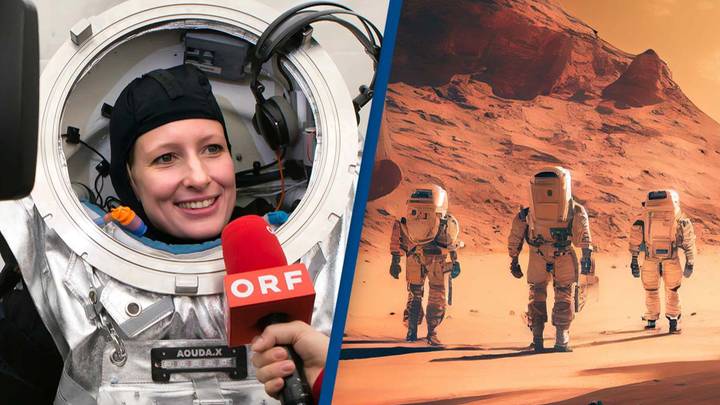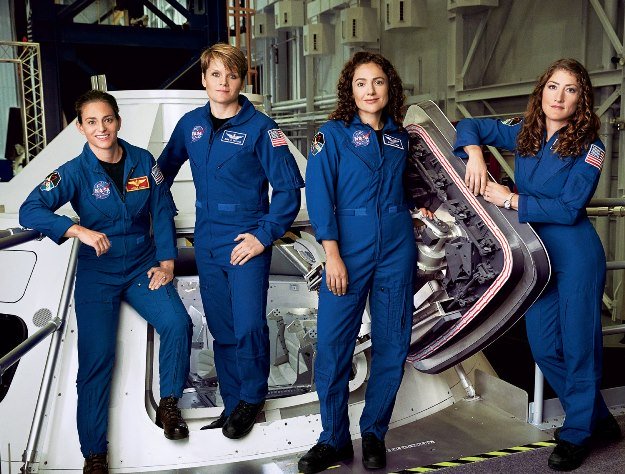
Mars Missions Should Have All Female Crews?
Share
In recent years, the prospect of sending humans to Mars has captured the imagination of space enthusiasts and scientists alike. NASA, SpaceX, and other space agencies and private companies have set their sights on the Red Planet, with plans to land astronauts within the next few decades. As discussions intensify about the composition of the crew that will represent humanity on Mars, an intriguing argument has resurfaced: should the crew be all-female?
This idea is not merely about diversity and representation; it also has biological and psychological implications that make it a compelling proposition. Scientific studies have shown that an all-female crew would consume fewer resources compared to an all-male crew, making the long-distance journey to Mars more efficient. However, experts are now questioning the relevance of this argument and advocating for a diverse crew that includes both men and women.
Benefits of an All-Female Crew

Since the 1950s, studies have consistently demonstrated that women occupy less space and require lower amounts of life-support resources, such as oxygen, water, and food, compared to men. A recent study published in the journal Scientific Reports supports this notion. Researchers found that on a 1,080-day mission, a four-member, all-female crew would require 3,736 pounds (1,695 kilograms) less food than an all-male crew, resulting in cost savings of $158 million.
The metabolic advantage of women, who tend to be smaller on average, is a significant factor contributing to these resource consumption differences. This advantage becomes even more pronounced during long-term missions like the one to Mars. The space industry continually strives to reduce the weight and volume of spacecraft and their contents, as the heavier a spacecraft is, the more fuel is needed to overcome Earth's gravity. Consequently, an all-female crew aligns with the goal of optimizing resource utilization.
To arrive at these findings, the research team used available data on astronauts' physical fitness and average body mass. They assumed a specific exercise regimen similar to what astronauts on the International Space Station follow. The calculations showed that, considering various heights, an all-female crew would consume between 5% and 29% less resources than an all-male crew. When considering astronauts at the 50th percentile of height by sex, the resource consumption difference ranged from 11% to 41%.
However, it's important to note that this study relies on several assumptions about future missions and the responses of individuals to them. Additionally, limited data on real astronauts, particularly women, restricts the comprehensiveness of these findings. The study remains theoretical and should not influence crew selection for a Mars mission at this stage, as lead researcher Jonathan Scott emphasized.
The Need To Thrust Onward
Despite the consistent findings from numerous studies, some scientists argue that technological advancements have made these calculations less relevant today than they were at the inception of the space program. Dr. Saralyn Mark, the health innovation director at Star Harbor, a spaceflight training facility in Colorado, believes that progress lies in moving forward rather than returning to past considerations. She emphasizes that individual training and their value to a mission should take precedence over resource consumption comparisons.
When the space program started in the late 1950s, the first American astronauts had to be small enough to fit in the compact one-man capsules of the Mercury spacecraft. Since women were prohibited from becoming military test pilots, which was the primary route to becoming an astronaut at the time, all the early astronauts were men. However, times have changed. To date, 78 women have flown to space, and NASA's astronaut classes now feature equal numbers of men and women.
The importance of diversity

While the statistics highlight the theoretical benefits of an all-female crew, experts caution against relying solely on numbers. Instead, they emphasize the significance of diversity in achieving mission success. Michaela Musilova, former director of the Hawaii Space Exploration Analog and Simulation (HI-SEAS) habitat, argues that if the goal is to reduce the weight and volume of resources, it doesn't necessarily mean an all-female crew is the solution. She emphasizes that diversity, encompassing a range of factors beyond gender, leads to a more efficient and effective crew.
Rather than perpetuating a binary competition between genders, the focus should be on harnessing the various skills and abilities of individuals and their collective dynamics as a team. Professor Gloria Leon, who studied mixed- and single-gender crews on multiple analog missions, highlights the complexity of individual physiology and its relation to performance during long-duration missions. Understanding these factors requires analog space missions that simulate conditions similar to those on the moon or Mars, where researchers can assess crew dynamics and performance.
Musilova's research has shown that gender-specific factors do not influence the efficiency or success of crews. However, the more diverse the crew, the better they can learn from each other, tackle challenges, and gain new perspectives. The focus should shift towards selecting competent, capable, and well-trained individuals who possess qualities necessary for space missions, such as empathy, effective communication, adaptability, and patience.
The Road to Mars: Embracing Diversity

As we envision a crewed mission to Mars, it is vital to consider what diversity on such a mission would entail. NASA's Artemis 2 mission, which will send a woman beyond low Earth orbit for the first time, represents a significant step. However, there is still a long way to go in terms of broader diversity. Research on the effects of spaceflight on intersex and transgender individuals is nonexistent, and the representation of various nationalities among astronauts remains imbalanced. A crewed mission to Mars presents an opportunity to address these gaps and foster inclusivity.
"I want everyone to see a part of themselves in the faces of those who go to Mars because it is basically a continuation of our species on another planet," says Dr. Saralyn Mark. By leveraging the technology and capabilities available today, we have the means to democratize space and ensure equal access for all. The focus should be on building competent, capable crews with diverse backgrounds and skill sets, who can collaborate effectively and overcome challenges together.
The path to Mars is not about gender-specific crew selections but about realizing the potential of human exploration beyond Earth. Let us look beyond traditional boundaries and embrace the multifaceted nature of our species as we embark on this extraordinary journey to the Red Planet.
You’ve come this far…
Why not venture a little further into A.S.S. - our exclusive Australian Space Society.
And keep thrusting Australia into the deep unknown…
#Space_Aus






1 comment
In 5 years time we’ll be sending ai robots to Mars, not people.